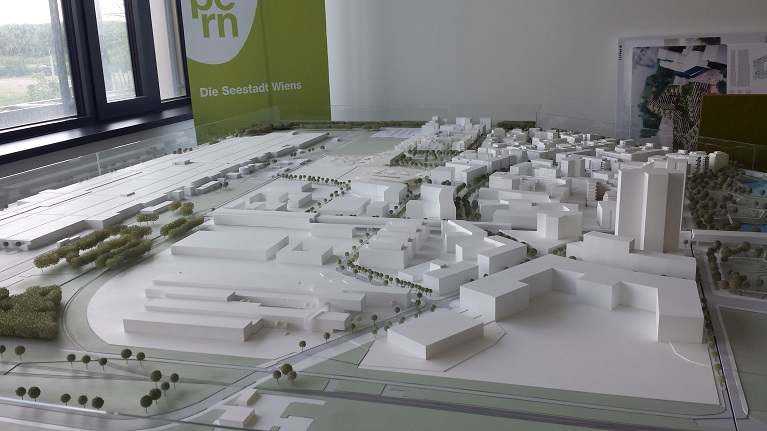Exploratory investigation of ICT-integration for buildings and the electricity grid in Vienna’s Aspern district
Central aim of the investigation is to determine the overall technical concept, consisting of the basic structure of the ICT architecture and the technical infrastructure. The project defines five typical use cases for examining the feasibility and the completeness of the concept.
This project is investigating the forms in which the potential to increase energy efficiency can be implemented, with an interlinked examination of the infrastructures relating to buildings and electricity grids, and the integration of renewable energy sources and storage technologies. Central aim of the investigation is to determine the overall technical concept for a selected test bed in the Seestadt Aspern district, which will subsequently be implemented in the lead project. Use cases will be defined to assist with determining the requirements for the overall technical concept, which includes the basic structure of the ICT architecture (hardware and software) and the technical infrastructure (heat pumps, photovoltaic systems, etc.).
An essential aspect of a smart city is the integration and optimisation of various energy-related sectors to form an overall system. Past research projects have shown that the systematic interlinking of buildings and electrical grids, ensuring secure and reliable communication and information, offers a high potential for increasing energy efficiency (e.g. reduction of peak loads in buildings, use of the building as a “storage facility” in the electricity grid, etc.).
The “Sondierung Aspern” investigation project deals with the issues raised by linking the electricity grid and building technologies, integrating renewable energy sources and providing electrical and thermal storage facilities, and bringing these areas together in an overall technical concept. The integration of these components by means of information and communication technology forms the basis for new services: the building is in a position to participate actively in the electricity supply market and/or act as a supporting element in the grid operation by means of its intrinsic storage capacity. Only by bringing together the various technical solutions in these different domains a comprehensive control system for the whole building, on the basis of market or grid parameters, is possible. Conversely, failure to take account of the building when operating the grid would be to neglect an important generation and storage component.
The next stage is the implementation of the concept in a lead project in the Seestadt Aspern district, to be submitted in the spring of 2014. Seestadt Aspern is one of the biggest urban development projects in Europe, which by 2030 will have developed into an urban centre in Vienna that has international resonance. This makes the Aspern exploratory investigation a direct preparation for a lead project, the activities of which can be linked to the investigation in July 2014. At the time of submission of the plans for the exploratory investigation, four building contractors (EBG, BIG, WBV, WAW) have stated their interest in the Aspern exploratory investigation project. In advance of the planned submission of the lead project, meetings are being held with other building contractors, in order to ensure a broader implementation. Central aim of the Aspern project is to determine the overall technical concept for a selected test bed in the Seestadt Aspern district. This includes the basic structure of the ICT architecture (hardware and software) and the technical infrastructure (heat pumps, photovoltaic systems, storage facilities, etc.). The project defines five typical use cases that form the starting point for examining the feasibility and completeness of the overall technical concept.
The use cases are technical applications that cover the topics of buildings, networks and markets, and can only be implemented in an integrative, system-optimising ICT infrastructure (in buildings, networks and network-building interfaces). Use cases are viewed at both communication technology and energy-related levels in order to enable the identification of all interdependencies.
The results of the exploratory investigation will therefore involve the development of an overall technical concept, consisting of an ICT concept and the technical infrastructure for renewable energies; the definition of five use cases, focusing on the networking of buildings, the electricity grid and the market as part of the Smart City test bed in Aspern; the specification of economic evaluation criteria for the defined use cases; a thorough examination of the security and privacy aspects (e.g. data protection) in the system concept; requirements specifications, in which the project results are recorded in a form that enables them to be used both as a starting point for the subsequent lead project, and as guidelines for the implementation.
Contact
Oliver Juli
Aspern Smart City Research
E-Mail: oliver.juli@ascr.at
This post is also available in: German




